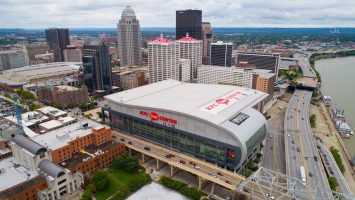
There is a lot of (understandable) excitement about smart cities. The possibilities of modernizing communities to make them more open, accessible and efficient for residents are worth the enthusiasm. But the task of deploying technology to improve the urban experience can seem like an overwhelming task. Even true believers can find themselves struggling to stay energized.
The potential for U.S. cities to transform themselves into smart cities, and the steps that need to be taken to get there, were part of the conversation I had recently as a guest on the “Dollars And Change” with hosts Nick Ashburn and Sandi Hunt. The audio originally aired on Sirius XM Channel 111, Business Radio Powered by The Wharton School.
Smart Cities Are About People
A key insight that came out of the interview was that smart city success requires a vision supported by strong leadership willing to provide the support necessary to make sure smart city projects are completed successfully. Also, while top-level buy-in from a mayor or governor is crucial to launch and sustain a Smart City campaign, it’s also important to identify the non-elected champions in the public and private realm who get excited about the improvements that can take place.
Sandi Hunt wisely stated, “Look for someone whose eyes light up.” There’s really no better way to put it.
These are the people who will become stewards for the movement. They will be the ones who look for ways to implement data and technology into their own processes and make it possible to start racking up wins that can be celebrated to build momentum. When these change-makers are led by a strong call from the community, it is possible to transform a city’s digital and real infrastructure.
Collaboration, Collaboration, Collaboration
It’s been said often in the smart city conversation that encouraging collaboration is critical. Including public officials, nonprofit and industry leaders, entrepreneurs and other community equity holders makes it possible to identify the most pressing or easily solved community issues and align these to the resources to begin executing quickly.
Envision Charlotte is a great example of collaboration between multiple sectors. A partnership between Duke Energy, Cisco and Charlotte Center City Partners that began in 2010 to increase the energy efficiency of commercial buildings is now a full-fledged sustainability program resulting in 19 percent energy reduction and $26 million in energy savings.
For industrial cities like Philadelphia or Chicago that were built up more than a century ago, collaboration means a flow of new ideas. Infrastructure and local policies weren’t designed with smart devices and 5G networks in mind. Questioning conventional wisdom and established bureaucracy means that the long-established “right way” of doing things doesn’t smother innovative ideas that can fundamentally change the way a city operates. We can see that happening in these cities.
This can be a scary, uncertain prospect for some residents and leaders. But it is also the wave of the future.
With a broad mission of integrating technology and data to improve the efficiency and effectiveness of a city’s operations, it is possible to change almost any aspect of city life for the better for anyone who lives in or touches the community. Doing so makes life better for everyone. All we have to do is get the right people – elected officials and community champions – on board and get started.


